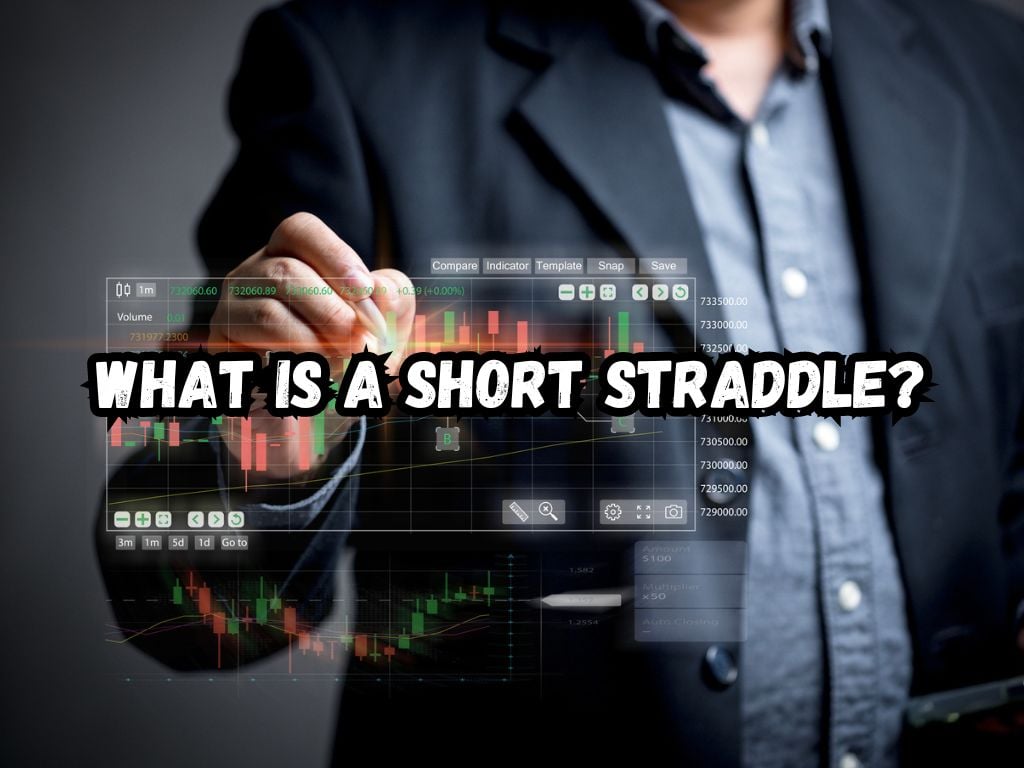Navigating the landscape of the stock market can be similar to an intricate dance. For traders, options strategies like the short straddle serve as choreographed moves designed to generate profits within this complex environment, leveraging market neutrality to their advantage.
What Is a Short Straddle?
At its core, a short straddle is an options trading strategy that involves selling both a call option and a put option at the same strike price and expiration date.
This approach is typically employed when a trader expects little to no volatility in the underlying asset’s price. Instead of betting on the market’s climb or descent, the trader is banking on it remaining relatively stable.

Components of a Short Straddle
To begin with, let’s break down the components that make up a short straddle. This strategy revolves around options—a type of derivative that gives the holder the right, but not the obligation, to buy or sell an asset at a specified price within a set timeframe.
The two types of options are calls and puts. A call grants the right to buy, while a put grants the right to sell.
In a short straddle, the trader sells both types, set at the same strike price, which is the agreed-upon price at which the asset can be bought or sold, and the same expiration date – the deadline for executing the option.
Implementing a Short Straddle Strategy
The implementation of a short straddle begins with a trader selling both a call and a put option.
This is usually done for the same stock and more importantly, at ‘at the money’ strike price, meaning the strike price is very close to the current price of the underlying stock.
The options are sold to open a position, collecting the premiums (the price paid for the option) from both the call and the put.
Ideally, this strategy works best in a stable market, where the price of the underlying asset is predicted to change very little, ensuring that neither options will be exercised.
Risks and Rewards
The charm and risk of a short straddle coexist. The reward is the sum of the premiums received from selling the call and put options.
This maximum profit is achieved if the stock price remains at the strike price at expiration. The trade-off? The risks are unlimited. If the stock price makes a significant move in either direction, the strategy incurs losses.
These losses can grow infinitely with the rise of the stock price because the call option seller has an obligation to sell the stock at the strike price, even if it soars much higher.
Similarly, if the stock plummets, the put option seller has to buy the stock at the strike price, which will be considerably higher than the market price.
Short Straddle vs. Other Options Strategies
When stacked up against other options strategies, the short straddle is unique in its stance on market volatility.
Other strategies, such as the long straddle, are the inverse, whereby the trader buys the options betting on a significant movement in the stock price.
The short straddle holds its ground best when the market whispers rather than roars, making it invaluable for times of expected stagnancy in contrast to the long straddle, which thrives on market uproars.
Real-World Examples
Let’s consider a stock currently priced at $50. A trader executes a short straddle by selling a call and a put option, both with a $50 strike price and a one-month expiration.
They collect a premium of $3 each. This means a total intake of $6 per share. If, at expiration, the stock is still around $50, neither option is exercised, and the trader pockets the $6 premium.
However, if the stock rises to $70, the call might be exercised, obliging the trader to sell the stock at the strike price of $50, incurring a potential loss.
Conversely, if the stock drops to $30, the put may be exercised, obliging the trader to buy at $50. Both scenarios erode profits beyond the initially collected premium.

Tips for Successful Short Straddles
To navigate short straddles successfully, traders must remain vigilant and proactive. Keeping an eye on market news and trends that may trigger volatility is essential.
Additionally, one must be ready to act if the market begins to move out of the preferred neutral zone. This might mean buying back options or using other hedging strategies to mitigate losses.
Frequently Asked Questions
What market conditions are ideal for a short straddle?
The perfect market for a short straddle is one that is expected to show little volatility, where the price of the underlying asset stays relatively flat until the options expire.
How does implied volatility affect a short straddle?
Implied volatility reflects the market’s forecast of a likely movement in a security’s price. Typically, a short straddle benefits from a decrease in implied volatility because it increases the likelihood that both options will expire worthless, allowing the seller to keep the collected premiums.
Can a short straddle be adjusted once it’s set?
Yes, a trader can decide to buy back the sold options to close the position or adjust the strategy if the market moves unexpectedly. It’s important to have a plan for such adjustments before entering the trade.
What are the tax implications of a short straddle?
The tax implications can be complex and vary by region. Generally, profits from short straddles are subject to taxation as capital gains. It is advisable to consult with a tax professional for advice on specific situations.
Conclusion
Having sifted through the nuances of the short straddle, it’s clear that this strategy isn’t for the faint of heart or those new to the markets. It calls for a calculated approach and a steady gaze on the market’s horizons.
Traders who are well-versed in assessing market conditions and are comfortable with the risks involved may find the short straddle an effective addition to their strategy repertoire.
Navigating the realm of options trading with strategies such as the short straddle requires a strategic mind and an intimate knowledge of the markets.
Such strategies are not quick tickets to wealth but are tools in the skilled trader’s arsenal, wielded most effectively with insight and caution.


 Tags:
Tags:










